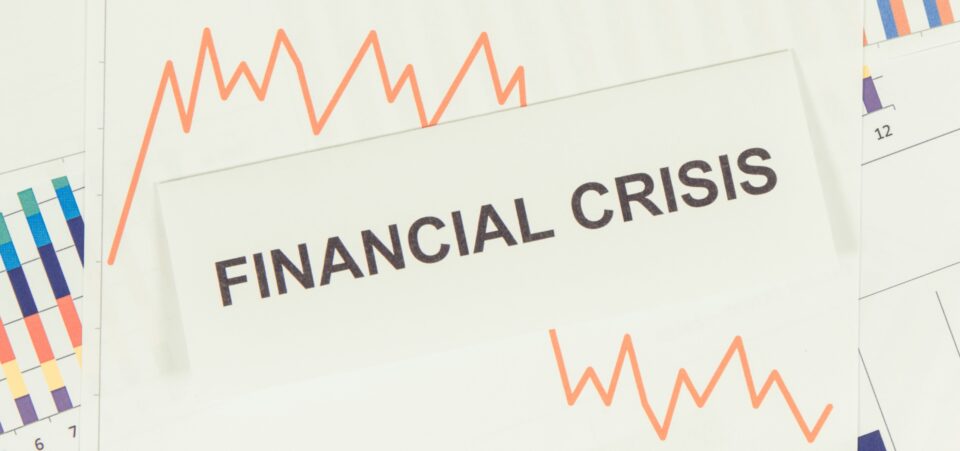Why the Odds of a Financial Crisis Are Increasing
The mainstream media has been busy talking about a soft economic landing, but the odds of a financial crisis remain high. One could argue that they’re even increasing.
If a financial crisis follows, be ready to see wild fluctuations in the financial markets and significant wealth destruction.
Why could there be a financial crisis? Just look at the amount of derivatives that are floating around in the financial system.
Before going into any details about why a financial crisis looms, here are some insights on how derivatives work and how dangerous they could be.
In 2002, in Berkshire Hathaway Inc.’s (NYSE:BRK.B) annual report, its CEO, Warren Buffett, explained the dangers of derivatives: “Charlie [Munger] and I are of one mind in how we feel about derivatives and the trading activities that go with them: We view them as time bombs, both for the parties that deal in them and the economic system.” (Source: “Berkshire Hathaway Inc. 2002 Annual Report, Berkshire Hathaway Inc., last accessed November 29, 2023.)
Buffett added,
Derivatives also create a daisy-chain risk that is akin to the risk run by insurers or reinsurers that lay off much of their business with others…A participant may see himself as prudent, believing his large credit exposures to be diversified and therefore not dangerous. Under certain circumstances, though, an exogenous event that causes the receivable from Company A to go bad will also affect those from Companies B through Z. History teaches us that a crisis often causes problems to correlate in a manner undreamed of in more tranquil times.
(Source: Ibid.)
He concluded, “In our view, however, derivatives are financial weapons of mass destruction, carrying dangers that, while now latent, are potentially lethal.”
For Every Dollar of Assets, U.S. Banks Have $10.59 Worth of Derivatives
If you thought the financial world had learned something from the financial crisis of 2009 and the failure of hedge funds like Long-Term Capital Management L.P.—or from legendary investors like Warren Buffett, sadly, they haven’t.
Here’s some perspective: in the second quarter of 2023, combined, U.S. banks had derivatives with a notional value of $221.9 trillion and assets of just $20.94 trillion. This was up by two percent quarter-over-quarter and close to 14% year-over-year! (Source: “Quarterly Report on Bank Trading and Derivatives Activities: Second Quarter 2023,” Office of the Comptroller of the Currency, last accessed November 29, 2023.)
That means, for every dollar of assets, U.S. banks have derivatives with a notional worth of about $10.60.
Here’s something even more troubling: 73.9%, or $164.1 trillion worth, of these derivatives are based on interest rates, which have been volatile lately.
There’s been a lot of noise about what will happen next. There’s a camp of economists and money managers who forecast that the Federal Reserve will start cutting interest rates as early as the first quarter of 2024, while others predict that we’re in this for the long haul and that interest rates will remain high for a longer period.
This Is How a Financial Crisis Could Get Triggered
Dear reader, I believe that derivatives are something that aren’t discussed much these days but pose a major risk.
I also wonder what will happen if a small portion of these derivatives go bad due to wild moves in interest rates. Even a small portion of the derivatives, like five percent, going in the wrong direction could do a lot of damage. It could cause multiple bank failures.
The financial world is walking a dangerous path. With interest rates being extremely unpredictable and the amount of derivatives being so high, a minor misstep could trigger a financial crisis.
If a financial crisis becomes a reality, we could see significant volatility across the board. Stocks could plummet, bonds could suffer immensely, home prices could tumble, and so on. Remember, in a financial crisis, it’s hard to price anything.






